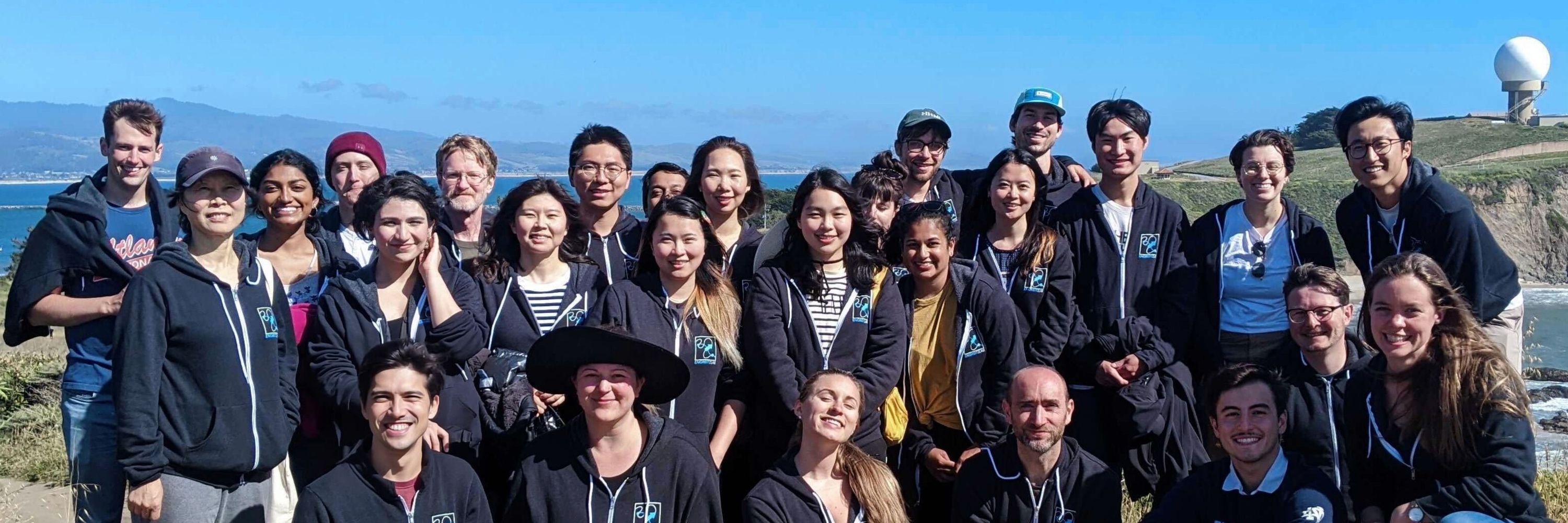
Jesse Engreitz
@jengreitz.bsky.social
Assistant Professor @ Stanford Genetics & BASE Initiative. Mapping the regulatory code of the human genome to understand heart development and disease. www.engreitzlab.org
And a big thank you to support from:
@novo-nordisk.bsky.social
@igvfconsortium.bsky.social
NIH-NHLBI
@americanheart.bsky.social
18/18
@novo-nordisk.bsky.social
@igvfconsortium.bsky.social
NIH-NHLBI
@americanheart.bsky.social
18/18
September 19, 2025 at 3:03 AM
And a big thank you to support from:
@novo-nordisk.bsky.social
@igvfconsortium.bsky.social
NIH-NHLBI
@americanheart.bsky.social
18/18
@novo-nordisk.bsky.social
@igvfconsortium.bsky.social
NIH-NHLBI
@americanheart.bsky.social
18/18
Thanks to Lars Steinmetz + @argschwind.bsky.social for developing the original TAP-seq method and collaborating on this study
Thanks to Gene Katsevich and Tim Barry for developing SCEPTRE and collaborating to explore how best to apply it to enhancer perturbation data
17/
Thanks to Gene Katsevich and Tim Barry for developing SCEPTRE and collaborating to explore how best to apply it to enhancer perturbation data
17/
September 19, 2025 at 3:03 AM
Thanks to Lars Steinmetz + @argschwind.bsky.social for developing the original TAP-seq method and collaborating on this study
Thanks to Gene Katsevich and Tim Barry for developing SCEPTRE and collaborating to explore how best to apply it to enhancer perturbation data
17/
Thanks to Gene Katsevich and Tim Barry for developing SCEPTRE and collaborating to explore how best to apply it to enhancer perturbation data
17/
This was a huge team effort —
Judhajeet + Evvie + Dulguun led the development DC-TAP-seq and design + execution of the random screens
James + Evvie led analysis of random screens
Maya + Andreas compared the effects to models and teased out indirect effects
Congratulations all!
16/
Judhajeet + Evvie + Dulguun led the development DC-TAP-seq and design + execution of the random screens
James + Evvie led analysis of random screens
Maya + Andreas compared the effects to models and teased out indirect effects
Congratulations all!
16/
September 19, 2025 at 3:03 AM
This was a huge team effort —
Judhajeet + Evvie + Dulguun led the development DC-TAP-seq and design + execution of the random screens
James + Evvie led analysis of random screens
Maya + Andreas compared the effects to models and teased out indirect effects
Congratulations all!
16/
Judhajeet + Evvie + Dulguun led the development DC-TAP-seq and design + execution of the random screens
James + Evvie led analysis of random screens
Maya + Andreas compared the effects to models and teased out indirect effects
Congratulations all!
16/
e.g. see preprint from the Quertermous lab using DC-TAP-seq to target elements containing variants for coronary artery disease in smooth muscle cells
The high statistical power of these experiments will be very important for finding effects in GWAS loci
www.medrxiv.org/content/10.1...
15/
The high statistical power of these experiments will be very important for finding effects in GWAS loci
www.medrxiv.org/content/10.1...
15/

Enhancer-targeting CRISPR screens at coronary artery disease loci suggest shared mechanisms of disease risk
To systematically identify causal genetic mechanisms that confer risk for coronary artery disease (CAD) in GWAS loci, we mapped genome-wide variant-to-enhancer-to-gene (V2E2G) links in vascular smooth...
www.medrxiv.org
September 19, 2025 at 3:03 AM
e.g. see preprint from the Quertermous lab using DC-TAP-seq to target elements containing variants for coronary artery disease in smooth muscle cells
The high statistical power of these experiments will be very important for finding effects in GWAS loci
www.medrxiv.org/content/10.1...
15/
The high statistical power of these experiments will be very important for finding effects in GWAS loci
www.medrxiv.org/content/10.1...
15/
We are excited to help you set these types of experiments in new systems and expand these data 10- to 100-fold in the next few years to better understand regulatory elements, improve predictive models, and interpret genetic variants.
14/
14/
September 19, 2025 at 3:03 AM
We are excited to help you set these types of experiments in new systems and expand these data 10- to 100-fold in the next few years to better understand regulatory elements, improve predictive models, and interpret genetic variants.
14/
14/
We hope that these tools are useful for you! This study presents our most complete toolkit to date for designing, conducting, and analyzing regulatory element CRISPR perturbation studies.
Code, protocols, data — all available now!
13/
Code, protocols, data — all available now!
13/
September 19, 2025 at 3:03 AM
We hope that these tools are useful for you! This study presents our most complete toolkit to date for designing, conducting, and analyzing regulatory element CRISPR perturbation studies.
Code, protocols, data — all available now!
13/
Code, protocols, data — all available now!
13/
Overall, these observations were consistent across the 2 cell types (K562 and hiPSCs), suggesting that they are likely to be more general beyond the favorite workhorse cancer cell line.
12/
12/
September 19, 2025 at 3:03 AM
Overall, these observations were consistent across the 2 cell types (K562 and hiPSCs), suggesting that they are likely to be more general beyond the favorite workhorse cancer cell line.
12/
12/
These unbiased CRISPRi datasets will help to evaluate predictive models (stay tuned for results for scE2G and ENCODE-rE2G)
Here, we show that this evaluation must account for the magnitude of effect sizes, frequency of indirect effects, chromatin states, and gene class.
11/
Here, we show that this evaluation must account for the magnitude of effect sizes, frequency of indirect effects, chromatin states, and gene class.
11/

September 19, 2025 at 3:03 AM
These unbiased CRISPRi datasets will help to evaluate predictive models (stay tuned for results for scE2G and ENCODE-rE2G)
Here, we show that this evaluation must account for the magnitude of effect sizes, frequency of indirect effects, chromatin states, and gene class.
11/
Here, we show that this evaluation must account for the magnitude of effect sizes, frequency of indirect effects, chromatin states, and gene class.
11/

